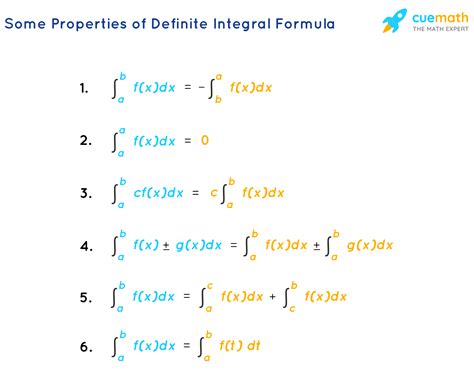Introduction

Calculus II, more commonly known as integral calculus, builds upon the foundation of differential calculus to delve into the concepts of integration. It enables us to compute areas, volumes, and other complex mathematical problems that involve continuous functions. In this article, we will explore the key topics of integral calculus, their applications, and their impact on modern-day society.
Integration: The Reverse of Differentiation
The key concept of integral calculus is integration, which is essentially the reverse process of differentiation. Whereas differentiation finds the instantaneous rate of change of a function, integration accumulates the changes over an interval to determine the total change or area under the curve.
Definite and Indefinite Integrals
Integrals can be classified into two types: definite and indefinite. Definite integrals evaluate the area between two specific points on the x-axis, while indefinite integrals represent the family of all antiderivatives of a given function.
Techniques of Integration
There are various techniques for evaluating integrals, including:
- U-Substitution: Substituting a new variable simplifies the integrand.
- Integration by Parts: Breaking down the integrand into two factors and integrating them separately.
- Trigonometric Integrals: Using trigonometric identities to simplify the integrand.
- Partial Fractions: Decomposing the integrand into simpler fractions that are easier to integrate.
Applications of Integral Calculus
Integral calculus finds applications in a wide range of fields, including:
- Area and Volume Calculation: Computing the area under a curve, volume of solids of revolution, and volumes of irregular shapes.
- Physics: Modeling motion, work, and heat transfer.
- Engineering: Designing bridges, airplanes, and other structures.
- Economics: Analyzing consumer behavior, production functions, and market equilibrium.
Impact on Modern Society
Integral calculus is indispensable in modern society, enabling advancements in technology, engineering, medicine, and finance. Some examples include:
- Medical Imaging: Computed tomography (CT) and magnetic resonance imaging (MRI) use integrals to reconstruct detailed images of the human body.
- Structural Engineering: Engineers use integrals to design buildings and bridges that can withstand various loads and stresses.
- Financial Modeling: Actuaries use integrals to assess risks and determine insurance premiums.
Additional Topics in Calculus II
Beyond integration, Calculus II also covers other important topics:
- Sequences and Series: Studying the convergence and divergence of infinite sequences and series.
- Multivariable Calculus: Extends the concepts of calculus to functions of multiple variables.
- Vector Calculus: Involves operations on vector functions, such as gradients, curls, and divergences.
Benefits of Studying Integral Calculus
Studying integral calculus offers numerous benefits:
- Problem-Solving Skills: Develops analytical and problem-solving abilities.
- Mathematical Foundation: Provides a strong mathematical foundation for advanced studies in science, engineering, and technology.
- Real-World Applications: Enables students to apply mathematical principles to solve real-world problems.
- Career Opportunities: Opens doors to careers in fields such as data science, engineering, and finance.
FAQs about Integral Calculus
-
What is the “Fundamental Theorem of Calculus”? It connects differentiation and integration, stating that the integral of the derivative of a function is the original function itself.
-
Why is calculus important? Calculus is essential for understanding and modeling the continuous processes that occur in the world around us.
-
How can I improve my integral calculus skills? Practice regularly, seek help from tutors or online resources, and understand the concepts before attempting problem-solving.
-
What are some examples of jobs that require integral calculus? Engineers, physicists, economists, actuaries, and data scientists all use integral calculus in their work.
Conclusion
Integral calculus is a powerful mathematical tool that extends the capabilities of differential calculus to solve complex problems involving continuous functions. Its applications are vast and have significantly impacted various fields, including technology, medicine, and finance. Studying integral calculus not only enhances mathematical understanding but also prepares individuals for careers that demand analytical and problem-solving skills.
Tables
Table 1: Techniques of Integration
| Technique | Description |
|---|---|
| U-Substitution | Substitutes a new variable that simplifies the integrand |
| Integration by Parts | Breaks the integrand into factors and integrates them separately |
| Trigonometric Integrals | Uses trigonometric identities to simplify the integrand |
| Partial Fractions | Decomposes the integrand into simpler fractions |
Table 2: Applications of Integral Calculus
| Field | Applications |
|---|---|
| Area and Volume Calculation | Computing area under a curve, volume of solids of revolution, volume of irregular shapes |
| Physics | Modeling motion, work, heat transfer |
| Engineering | Designing bridges, airplanes, structures |
| Economics | Analyzing consumer behavior, production functions, market equilibrium |
Table 3: Impact of Integral Calculus on Modern Society
| Advancements | Importance |
|---|---|
| Medical Imaging (CT, MRI) | Detailed images of the human body |
| Structural Engineering | Designing safe and efficient structures |
| Financial Modeling | Assessing risks, determining insurance premiums |
Table 4: Benefits of Studying Integral Calculus
| Benefits | Description |
|---|---|
| Problem-Solving Skills | Develops analytical and problem-solving abilities |
| Mathematical Foundation | Provides a strong mathematical foundation for advanced studies |
| Real-World Applications | Enables students to apply mathematical principles to solve real-world problems |
| Career Opportunities | Opens doors to careers in various fields, such as science, engineering, and finance |
